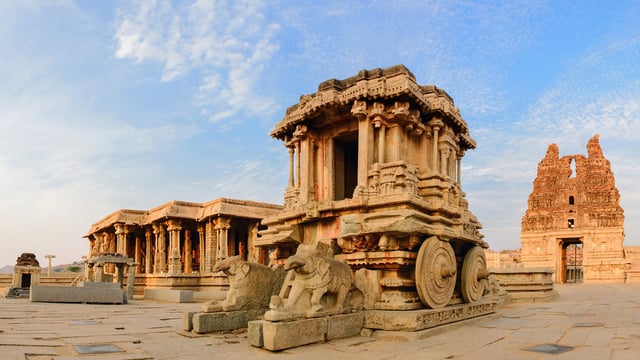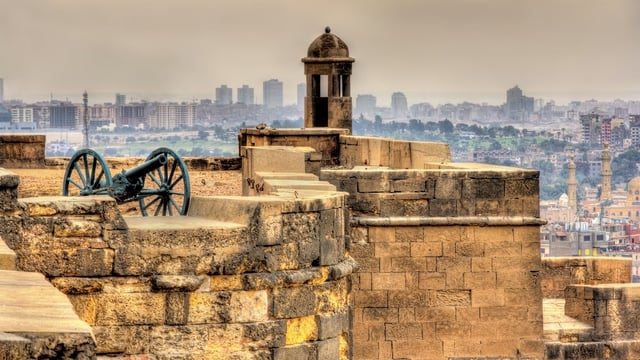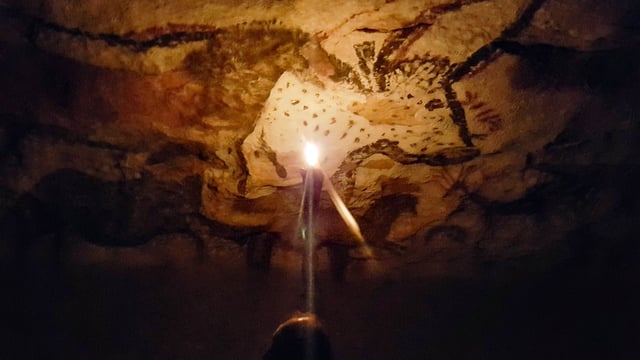With the Indus Valley civilization and several subsequent empires and kingdoms, India is one of the World’s archaeological gems. Be it ancient forts or some of the world’s oldest universities, India has more than a thousand archaeological sites – many of which are accessible to travellers and tourists. Since ancient times the region has seen several cultures flourish due to the endless conquest of the region between various empires and kingdoms. These cultures have all brought different technological and architectural advances to the region. In this guest post Rohit Agarwal, someone who is truly passionate about all that India has to offer travellers, shares what he thinks are the best archaeological wonders you must see for yourself on your trip to the mystical land of India.
- Rohit Argarwal
- Last Checked and/or Updated 15 December 2021
- No Comments
- Archaeological Sites
Kumbhalgarh Fort, Rajasthan
Kumbhalgarh Fort is one of the largest hilltop forts in the World, and one of six spectacular Hill Forts of Rajasthan included on UNESCO’s list of World Heritage sites. The region of Kumbhalgarh was ruled by a Rajput clan called the Sisodia Rajputs. King Rana Kumbha, after whom the fort is named, laid the foundation of this majestic fort in the 15th century AD when it became the capital of the Kingdom of Mewar. Kumbhalgarh was home to the Sisodia Rajputs until the capital of Mewar moved to the more strategic city of Udaipur.
The fort is built in a distinctive Hindu Rajput architectural style while also borrowing influences from Persian architecture. The impressive walls are thick enough to allow eight horses to walk abreast of each other on the top, and extend for some 36 kilometres around a hilltop, which is itself about 1,100 metres above sea level, making this the second longest ancient wall in the World – after the Great Wall of China. Within these walls there are over 360 Jain and Hindu temples. Not surprisingly given the dimensions of these walls then, the fort remained impregnable, falling only once due to a shortage of water when surrounded by the collective forces of Akbar, Raja Mansingh of the Dundhar kingdom in Rajasthan and the Sultan of Gujarat.
From its elevated, hilltop location, there are fantastic, panoramic views of the surrounding Aravalli Mountains – the oldest mountain range in India.
GETTING TO KUMBHALGARH FORT
The city of Kumbhalgarh is in the Rajsamand District of Rajasthan, which is about 102 km west of Udaipur. Udaipur has an important domestic airport, from where it is easy to get a car for the hour and a half journey to the fort.
Kumbhalgarh is included on two tours of the ancient and religious sites of the Udaipur region: choose between a Two-Day Itinerary and a Three-Day Itinerary.
Read more about the Hill forts of Rajasthan.
Jaisalmer Fort, Rajasthan
If you are still in doubt about the grandeur of the forts of Rajasthan and want to see another jewel in that region’s ancient crown, then you should certainly consider visiting Jaisalmer Fort. The fort was built in the 12th century AD by a Bhati Rajput ruler Rawal Jaisal, who named the fort after himself. Jaisalmer was ruled by the Rajputs until it was captured in the 13th century by Ala-ud-din Khilji and his forces, who ruled here for 9 years. Later, in the 16th century, the fort was again captured, but this time by the Mughals under their emperor Humayun.
As a typical Rajastan hill fort, Jaisalmer is situated on Trikuta Hill, which makes it strikingly visible on the vast stretches of sand of the Thar Desert. This striking appearance is further enhanced by yellow sandstone used in its construction. As a result, the fort quite spectacularly reflects the sun rays against the backdrop of the sandy desert and appears as if it is made of gold – hence why it is also called Sonar Quila or the Golden Fort.
The fort has 3 layers of walls, inside which there are the various residential quarters of the royal family, temples and the elaborately carved merchant houses known as havelis. The other attractions in the fort include Jain Temples from the 12th century and a large library known as the ‘Granth Bhandar’ that contains scripts and texts from the 12th and 13th centuries. The city of Jaisalmer has now spread beyond the walls, but there was a time when the entire population, which consisted mainly of merchants and the workers of the Bhati Rajputs, used to reside within the walls of the Fort.
GETTING TO JAISALMER FORT
The ‘Golden City’, as Jaisalmer is also known, is close to the border with Pakistan, on India’s westernmost frontier. Jaisalmer is about 285 km from Jodhpur, the nearest airport. From Jodhpur there is a regular bus service, and taxis readily run between the two cities. Private Transfers from the Airport to Jaisalmer are very reasonably priced. Also, there is a direct, overnight train service than runs from Delhi to Jaisalmer.
There are a few Private Tours of Jaisalmer Fort to choose from, but it is the Private Jaisalmer City Tour with Fort and Heritage Havelis that stands out from the others.
Meenakshi Temple, Tamil Nadu
Also known as Meenakshi Amman Temple, this temple is one of the highlights of the city of Madurai in the Indian state of Tamil Nadu. Madurai has been inhabited for over two thousand years, and is not only one of the oldest cities of India, it is also one of the oldest, continuously inhabited cities of the world. The temple is dedicated to the Hindu goddess Parvati who is the consort of the deity Lord Shiva. The temple complex is well known for its striking gopurams, there are 14 of them in all. These are multi-storeyed gayeway towers that are covered with many thousand carvings of animals, gods and demons all painted in bright colours. The exact date when the temple was built is uncertain, but it is said to have been founded by Lord Indra about 2,500 years ago. The architecture is typical Dravidian style and the Gopurams are elaborately ornate with carvings, motifs and stucco figurines that depict the various beings from Hindu mythology. The total number of sculptures found on the temple is estimated at approximately 33,000, making Meenakshi Amman Temple an archaeological marvel for anyone who loves ancient and religious arts.
The temple is located in heart of the city of Madurai, one of the more interesting places to visit in Tamil Nadu. During the annual 10-days festival that takes place in the months of April and May, the temple attracts more than a million visitors. One of the major attractions at the temple is the tallest gopuram. Built in the 16th century and nearly 60 metre high, it is the two golden vimanas carved with numerous sculptures many come to see. Another must see feature here is the hall of thousand pillars, especially for those who have a specific interest in Dravidian architecture and stone carving skills.
GETTING TO MEENAKSHI TEMPLE
This historic Hindu temple is located on the southern bank of the Vaigai River in Madurai, which is the third largest city in the state of Tamil Nadu. Air and rail are the main methods of transport for getting to Madurai. The airport serves both domestic and international flights, and the centrally located station is well connected to many other Indian cities.
Khajuraho Temples, Madhya Pradesh
The Khajuraho group of monuments can be found in the Chhatarpur district of the Indian state of Madhya Pradesh; more specifically in the town of Khajuraho. The various temples were built in the 10th and 11th centuries by the Chandela Rajput dynasty. Most of the temples are dedicated to Hindu deities or the Jain sect. According to historians there were once around 85 temples spread throughout an area of about 20 kilometres. Sadly, only 20 of them have survived to this day and are protected under the Archaeological Survey of India as well as being listed as a UNESCO World Heritage Site. The temples are located near the Vindhya Mountain range and were built in amongst a number of natural lakes.
The main reason the temples of Khajuraho are so well known is because of their distinctive architectural style and they are decorated with elaborately carved figurines and sculptures. Of these the most famous are those that display erotic art associated with the Hindu tradition of Kama. The erotic arts comprise around 10% of the total sculptures found in Khajuraho. The remaining 90% of the sculptures display the daily lives of people and the various principles of Hindu culture. Each February the Chitragupta or Vishwanath Temples host the Khajuraho Dance Festival, the prefect opportunity to see performances of classical Indian dance.
GETTING TO THE KHAJURAHO GROUP OF MONUMENTS
Khajuraho is well connected to other Indian cities by rail and air. The Khajuraho Airport is about 5 kms form the city and has regular flights from Delhi, Varanasi and Mumbai. There are daily trains from Delhi.
Konark Sun Temple, Odisha
The Konark Sun Temple, also known as the Black Pagoda, is in the Indian state of Odisha. The temple was built by the Eastern Ganga Dynasty during the mid 13th century. The temple is listed in the UNESCO’s World Heritage Sites and is essentially one of the 7 Wonders of India. As the name suggests the temple is dedicated to the Sun and is built in the shape of an Indian chariot with wheels carved besides the temple. The temple was originally built at the banks of the Chandrabhaga River, but the waters have receded.
Built in the shape of the Sun god’s chariot the temple has 12 pairs of wheels which were carved out from stone. The wheels of the temple also serve as sundials which were used to denote time according to the position of the Sun. The Kalinga style of architecture is pretty evident with the elaborate carvings. The temple stands on the site of a previous temple which was built around the 7th century AD. The current temple was built by the Eastern Ganga King Narsimhadeva I to celebrate his victory over the invading army of Tughral Tughan Khan during the era of the Delhi Sultanate. The temple structure that stands today is only a shadow of the massive structure that stood till it was mysteriously destroyed around the 19th century. Several theories exist regarding the collapse of the temple structure.
GETTING TO KONARK SUN TEMPLE
Konark is a popular tourist destination, and one of the major cities of the state of Odisha. The best way to reach it is by car from Puri (33km) or Bhubaneswar (65km). Direct flights from Kolkata, Delhi, Hyderabad, Chennai, Bangalore and Nagpur will get you to the nearest airport in Bhubaneswar. Puri and Bhubaneswar are linked by train to all the major cities in India. The best time to visit Konark is from October to March.
Nalanda University, Bihar
Nalanda is one of the oldest centres of higher learning and education, and an ancient Buddhist Monastery in India. It is located in the Indian state of Bihar which was known to be the ancient kingdom of Magadha. The university was built by the Gupta and the Pala Empires and flourished as an important centre of learning between the 5th century and the 13th century before it was destroyed by the Mamluk Dynasty. The village of Nalanda was an important trade site in the ancient capital of Magadha and is said to have been visited by Gautama Buddha, Lord Mahavira and the Jain Tirthankaras.
The University was established by the rulers of the Gupta dynasty and was later improved by the Pala Dynasty. It was also visited by the Chinese traveler Hiuen Tsang around the 7th century AD, when it is thought he spent around 2 years in the monastery. Nalanda was what one can call a residential school with separate dormitories that accommodated around 10,000 students and 2,000 teachers. Being an ancient architectural masterpiece, the university also had a massive library which was divided into 3 buildings one of which was 9 stories high. Students and scholars from countries such as Korea, China, Japan, Indonesia, Turkey and Persia all came to Nalanda to study at Nalanda. The importance of the University was synonymous with the decline of Buddhism in India and the rise of Hinduism in the subcontinent. The University’s legacy finally came to an end during the 13th century when Bakhtiyar Khilji, an invading Turkic chieftain ransacked the building and set fire to the great library.
GETTING TO NALANDA UNIVERSITY
Nalanda is best served by the town of Bihar Sharif, about 15 km away. From here there is a regular bus service and there is also the option of taking a taxi. Bihar Sharif has a train station, which is connected to the nearby town of Patna and then many major cities in India.
Hampi Village, Karnataka
The most searched historical places on Google in the year 2014, Hampi is a village located in the Indian state of Karnataka. The village is famous for containing one of the largest archaeological sites in India, another of India’s UNESCO World Heritage Sites. Hampi is home to the ancient ruins of the city of Vijaynagar which was the capital of the ancient Indian Vijaynagar Empire. It is known for the rich archaeology of the once prosperous city of the now extinct kingdom and the immensely marvellous Virupaksha Temple. Hampi served as a major strong hold of the Vijaynagar Kings during the 14th and the 16th centuries and is known for its several Hindu Temples. Apart from the temples, the site contains various civil buildings and structures such as the Zanana Enclosures, Elephant Stables, The king’s balance, canals and Aqueducts, Lotus Mahal and several archeological findings from the site are now displayed at the archaeological museum at Kamalapura. The origins of the settlements at the site remains to be unknown but excavations have suggested that they started around the 1st century AD. The Virupaksha Temple is one of the most popular structures at Hampi and was built in a typical Dravidian style by the Chalukyas who ruled the region around the 7th century AD. It was later restored and expanded by the Vijaynagar King Krishnadevaraya and is responsible for the construction of the pillar hall. The chariot festival is celebrated here annually during the month of February and is a must visit.
How to Get to Hampi Village
The nearest train station for Hampi is the nearby town of Hospet, which is about 13 km from Hampi. Hospet is well connected to most major cities in India by train and bus, as well as Bangalore. At 60km away, Bellary is the nearest domestic airport. From Hospet to Hampi there are buses every 15 to 20 minutes.
Guest Author: Rohit Argarwal
This guest article, with its interest choice of ancient monuments in India, was written by Rohit Agarwal, an architect by profession and a traveller at heart. Over the years, he has visited several tourist sites in India beyond the usual, popular destinations. Rohit enjoys spending time at each destination taking in each place’s many facets. He shares these experiences from his travels as the writer for Trans India Travels, an excellent travel guide for India that has so much more information about the numerous and varied attractions in India.






